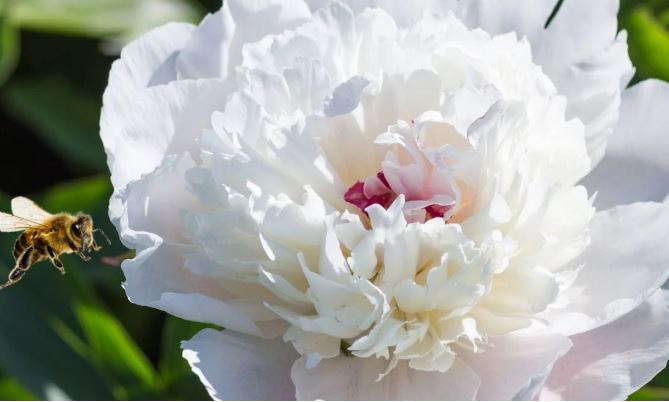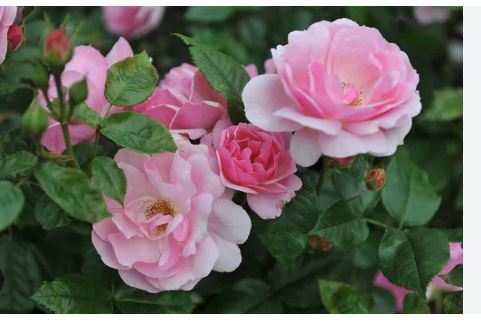
Double bloom flowering vines are climbing or trailing plants known for their lush, multi-petaled flowers, created by genetic mutations that produce extra petals, often replacing reproductive parts. These blooms, appearing in vibrant hues like purple, white, or red, add dramatic vertical beauty to gardens, trellises, or indoor spaces. Their dense, ruffled appearance makes them prized for ornamental displays, enhancing arbors or pergolas.
These vines thrive in diverse climates, typically USDA zones 4–11, preferring full sun to partial shade and well-drained soil. Their climbing mechanisms—tendrils, twining stems, or aerial roots—require sturdy supports like fences or trellises. Regular pruning maintains shape and encourages prolific blooming, while some need frost protection in cooler regions.
Blooming periods vary, often spanning spring to fall, with some flowering year-round in warm climates. The extra petals often make flowers sterile, extending bloom time but reducing seed production and pollinator attraction. Despite this, their showy displays draw occasional bees or hummingbirds, adding life to garden spaces.
Many double bloom vines are perennial, regrowing annually, though some are grown as annuals in colder zones. Their vigorous growth can cover large areas, but certain species may become invasive, requiring careful management. Their lush foliage and dense blooms make them ideal for privacy screens or decorative accents.
Ecologically, these vines contribute to garden aesthetics more than biodiversity due to their reduced reproductive capacity. Their long-lasting blooms are perfect for cut flower arrangements or creating focal points in landscapes. With proper care, they offer enduring beauty, blending elegance with structural versatility in any setting.

Double Bloom Flowers
Double Clematis
Double clematis features layered, deep blue to purple flowers resembling pom-poms, with green, deciduous leaves. Native to temperate regions, it thrives in full sun with cool, moist roots (USDA zones 4–9). Blooming late spring to early summer, it climbs trellises via leaf stalks, attracting bees, but its sterile blooms need pruning and rich soil for vigor.
Double Wisteria
This wisteria cultivar produces dense, double-layered, lavender-blue flower clusters with a sweet fragrance, paired with pinnate green leaves. Native to Asia, it grows in full sun and well-drained soil (zones 5–9). Blooming in spring, it twines on sturdy pergolas, attracting pollinators, but requires heavy pruning to manage its aggressive growth.
Double Climbing Rose
Double Delight climbing rose bears creamy white flowers with red edges, highly fragrant, on thorny canes with green leaves. Native to hybrid origins, it thrives in full sun and fertile soil (zones 5–10). Blooming summer, it climbs arbors, drawing butterflies, but needs regular watering and pest control for lush, sterile blooms.
Double Honeysuckle
This honeysuckle cultivar has double, tubular, pink and white flowers with a strong fragrance, and oval green leaves. Native to Europe, it grows in full sun to partial shade and well-drained soil (zones 4–9). Blooming summer to fall, it twines on fences, attracting hummingbirds, but its sterile flowers limit seed production.
Double Morning Glory
Double morning glory, an annual, produces ruffled, double blue flowers that open in the morning, with heart-shaped green leaves. Native to the Americas, it thrives in full sun and well-drained soil (zones 2–11). Blooming summer, it climbs trellises, attracting bees, but self-seeds, requiring control to prevent spread.
Double Passionflower
This passionflower cultivar features intricate, double-layered, purple-white flowers with green, lobed leaves. Native to South America, it grows in full sun to partial shade and well-drained soil (zones 6–10). Blooming summer, it climbs via tendrils, attracting butterflies, and produces sterile blooms, needing warm conditions for best display.
Double Trumpet Vine
Double trumpet vine bears clusters of double, orange-yellow, trumpet-shaped flowers with evergreen leaves. Native to North America, it thrives in full sun and various soils (zones 4–9). Blooming summer, it climbs via aerial roots, attracting hummingbirds, but its invasiveness requires vigilant pruning to control spread.
Double Sweet Pea
Double sweet pea, an annual, has fragrant, double, purple-pink flowers with delicate green leaves. Native to the Mediterranean, it grows in full sun and moist, fertile soil (zones 2–11). Blooming spring to summer, it climbs trellises, attracting bees, and is ideal for cut flowers, needing cool temperatures.
Double Black-Eyed Susan Vine
This cultivar produces double, bright orange flowers with dark centers, and heart-shaped green leaves. Native to Africa, it grows as an annual or perennial in full sun and well-drained soil (zones 9–11). Blooming summer to fall, it twines on supports, attracting butterflies, perfect for baskets.
Double Mandevilla
Double mandevilla has large, double, crimson-red flowers with glossy green leaves. Native to South America, it thrives in full sun and well-drained soil (zones 9–11). Blooming summer to fall, it climbs trellises, attracting hummingbirds, and suits containers, needing frost protection for longevity.
Double Bougainvillea
Double bougainvillea features vibrant, double-layered, red bracts around tiny white flowers, with thorny green stems. Native to South America, it grows in full sun and well-drained soil (zones 9–11). Blooming year-round in warm climates, it climbs walls, attracting pollinators, but requires careful pruning due to thorns.
Double Jasmine
Double jasmine produces clusters of fragrant, double white flowers with glossy green leaves. Native to Asia, it thrives in full sun to partial shade and well-drained soil (zones 8–10). Blooming spring to summer, it twines on arbors, attracting bees, and needs consistent moisture for lush blooms.
Double Moonflower
Double moonflower, an annual, has large, double white flowers that bloom at night, with heart-shaped green leaves. Native to the Americas, it grows in full sun and well-drained soil (zones 2–11). Blooming summer to fall, it climbs trellises, attracting moths, but its toxic seeds require cautious handling.
Double Star Jasmine
Double star jasmine bears fragrant, double white flowers with glossy, evergreen leaves. Native to Asia, it thrives in full sun to partial shade and well-drained soil (zones 8–10). Blooming summer, it climbs fences, attracting bees, and its sterile blooms need minimal pruning for dense growth.
Double Coral Vine
Double coral vine has clusters of double, pink flowers with lacy green leaves. Native to Mexico, it grows in full sun and well-drained soil (zones 8–11). Blooming summer to fall, it climbs via tendrils, attracting butterflies, but can be invasive, needing regular monitoring.
Double Hyacinth Bean
Double hyacinth bean, an annual, produces double, purple flowers followed by edible pods, with purple-tinted leaves. Native to Africa, it thrives in full sun and fertile soil (zones 2–11). Blooming summer, it climbs trellises, attracting pollinators, with young pods used in cooking, though seeds are toxic.
Double Cup-and-Saucer Vine
Double cup-and-saucer vine bears large, double, purple flowers with green calyx “saucers” and broad green leaves. Native to Central America, it grows as an annual or perennial in full sun and well-drained soil (zones 9–11). Blooming summer to fall, it climbs via tendrils, attracting hummingbirds, and grows rapidly.
Double Blue Passionflower
This passionflower cultivar produces intricate, double-layered, blue and white flowers with a central corona, paired with lobed green leaves. Native to South America, it thrives in full sun to partial shade and well-drained soil (USDA zones 6–10). Blooming summer to fall, it climbs via tendrils, attracting butterflies, but its sterile blooms require warm conditions and pruning for vigor.
Double Climbing Hydrangea
This climbing hydrangea variant bears clusters of double, white, lacecap-like flowers with heart-shaped green leaves, clinging via aerial roots. Native to Asia, it grows in partial shade and moist, well-drained soil (zones 4–8). Blooming early summer, it covers walls, drawing bees, and needs slow establishment but minimal maintenance once mature.
Double Chilean Glory Flower
Double Chilean glory flower features clusters of double, tubular, red-orange flowers with small, pinnate green leaves. Native to South America, it grows as a perennial or annual in full sun and well-drained soil (zones 8–11). Blooming summer to fall, it climbs via tendrils, attracting hummingbirds, and prefers frost-free climates for continuous flowering.
Double Golden Trumpet
This golden trumpet cultivar produces large, double, bright yellow flowers with glossy green leaves on woody vines. Native to South America, it thrives in full sun and well-drained soil (zones 9–11). Blooming year-round in warm areas, it climbs trellises, attracting butterflies, but is toxic, needing careful pruning and handling.
Double Scarlet Runner Bean
Double scarlet runner bean, an annual, bears clusters of double, vivid red flowers with broad green leaves, followed by edible pods. Native to Central America, it grows in full sun and fertile, moist soil (zones 2–11). Blooming summer, it twines on supports, attracting hummingbirds, with young pods used in cooking, requiring trellising.
Double Japanese Honeysuckle
This honeysuckle cultivar has double, fragrant, white flowers that age to yellow, with oval green leaves. Native to Asia, it thrives in full sun to partial shade and various soils (zones 4–9). Blooming summer to fall, it twines on fences, attracting bees, but its invasiveness demands sterile blooms and aggressive pruning to control spread.